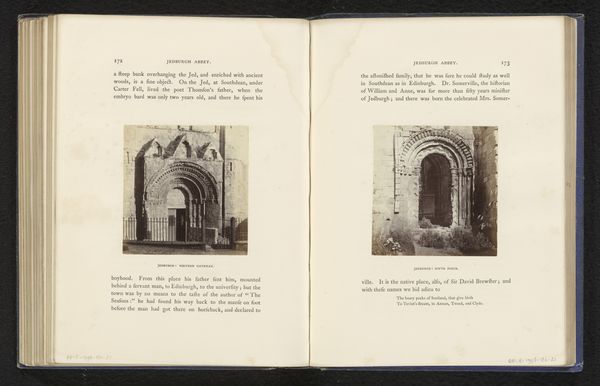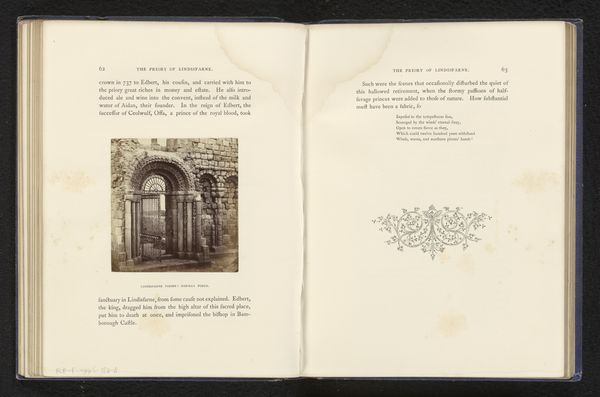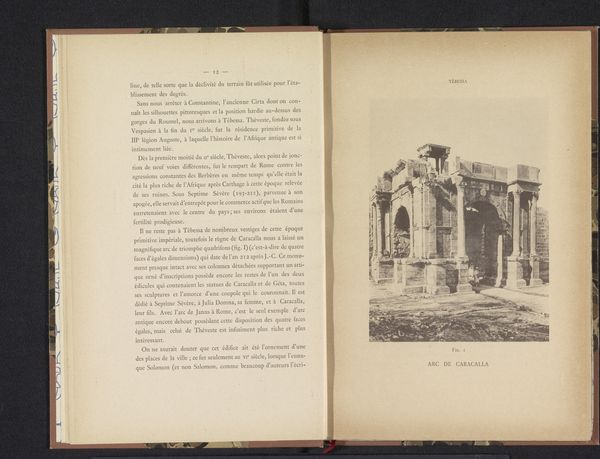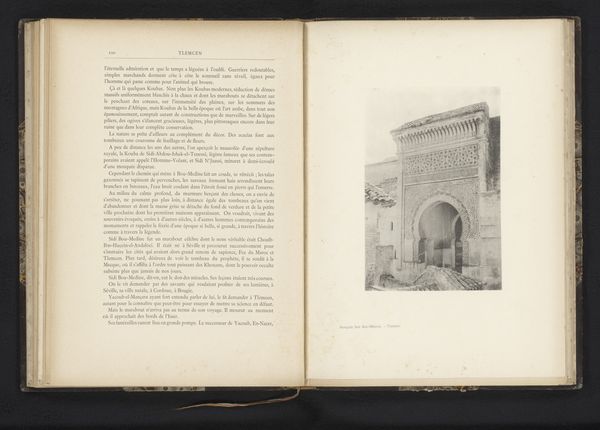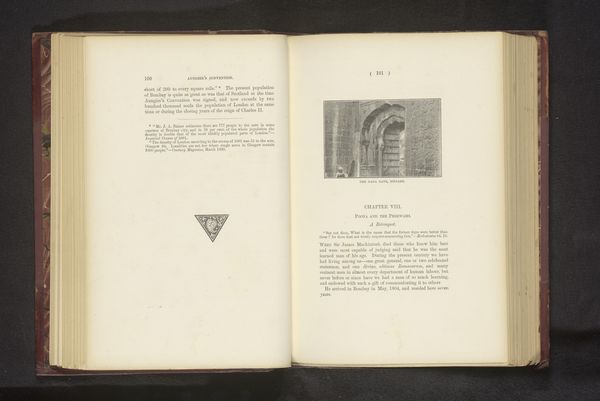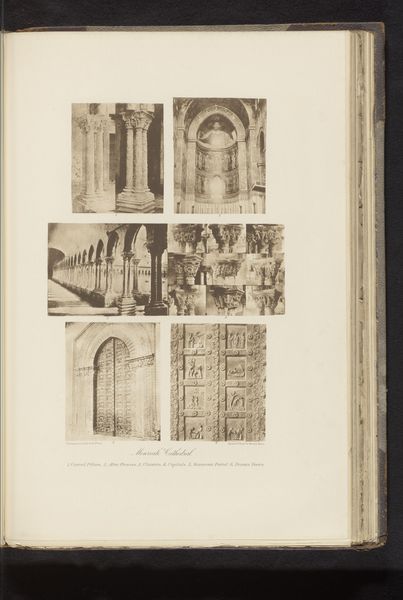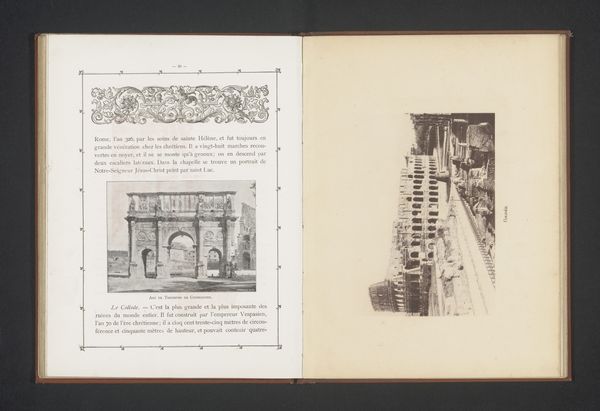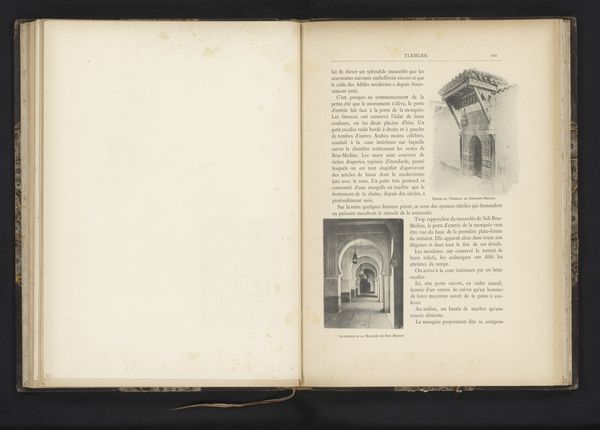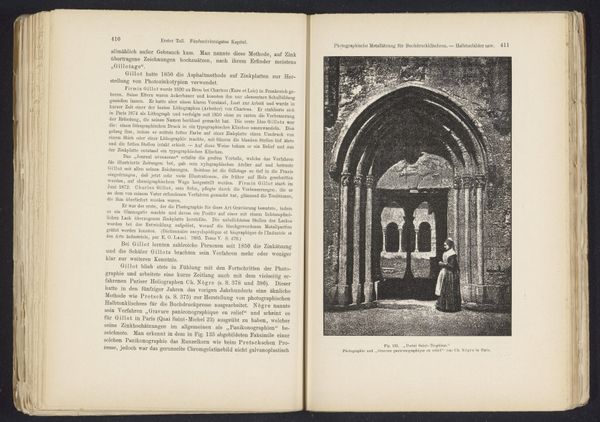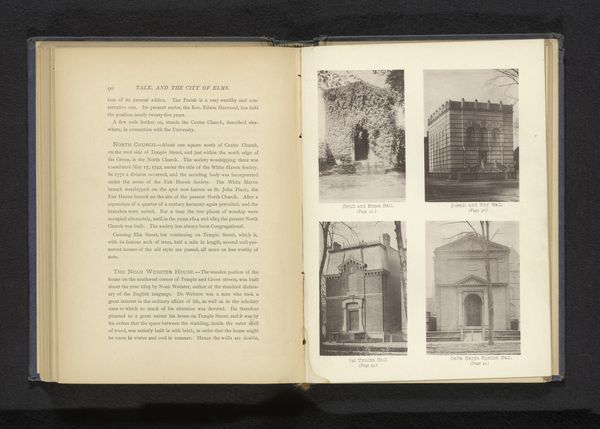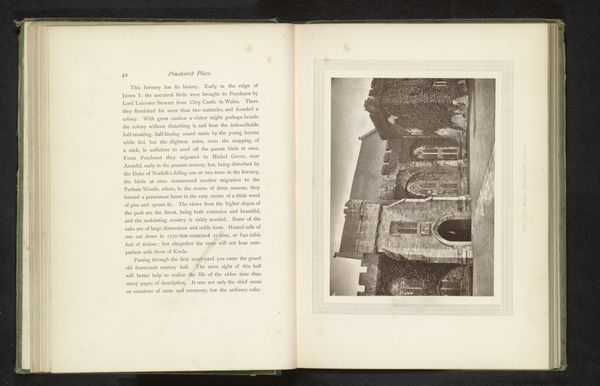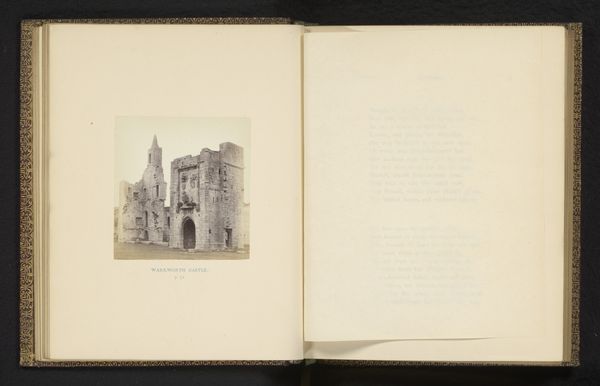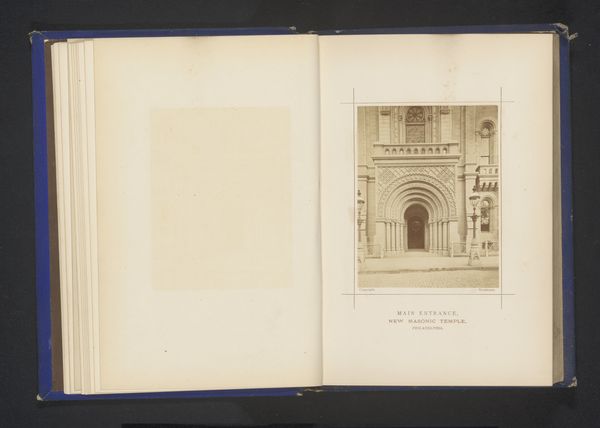
print, photography, site-specific, gelatin-silver-print, architecture
#
medieval
# print
#
landscape
#
photography
#
site-specific
#
gelatin-silver-print
#
architecture
Dimensions: height 100 mm, width 140 mm
Copyright: Rijks Museum: Open Domain
Curator: This fascinating gelatin-silver print, created by Francis Frith before 1867, captures the "Portaal van de Saint Mary the Virgin in Iffley." It's currently held in the Rijksmuseum. What strikes you initially? Editor: The density. There's such a concentration of texture, particularly in the doorway's ornamentation, almost overwhelmingly detailed in its materiality. Curator: Precisely! This image speaks volumes about the intersection of medieval artistry and 19th-century photographic reproduction. Consider how Frith, operating within the burgeoning medium of photography, chooses to document a very specific type of architectural site linked to religion and hierarchy. The deliberate focus frames our understanding of power and belief. Editor: The materiality definitely drives that. Look at how the process allows us to appreciate the tooling on the stones, the individual acts of creation now fossilized. The labor involved is immense, rendered in light and chemistry. I’m also intrigued by the print's place in a bound book, which seems to flatten the space between site specificity and industrial mass-reproduction. Curator: Indeed. This was produced in a very specific socio-historical environment: a moment of intense societal transformation as both spiritual and labour structures were being questioned. How can we view this work, depicting the Church’s material entrance, as either legitimising the values it portrays, or questioning the dominance these materials once exerted? Editor: A lot depends on context, doesn’t it? Without more about the work’s distribution or reception, I can only observe that the reproduction allows wider consumption of this monument. Making visible, where its impact once would’ve been limited to its community and perhaps travelers who would be exposed to it physically. Curator: Exactly. The materiality of this doorway, now disseminated through photographic technology, grants an illusion of democratic availability. It challenges elitism to an extent, yet arguably strengthens its symbolic cultural presence too. A very ambivalent image if you allow it to be. Editor: Ultimately, it's an intricate conversation, an interchange that extends beyond the church threshold, or the edge of the print itself. The work provokes our contemplation on faith, work, and historical access.
Comments
No comments
Be the first to comment and join the conversation on the ultimate creative platform.
